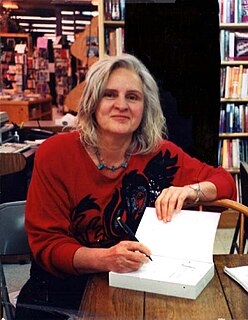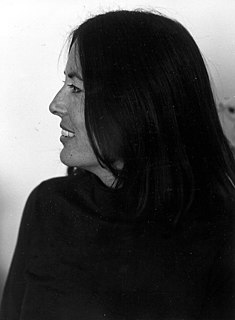Related Research Articles

Surrealism was a cultural movement which developed in Europe in the aftermath of World War I and was largely influenced by Dada. The movement is best known for its visual artworks and writings and the juxtaposition of distant realities to activate the unconscious mind through the imagery. Artists painted unnerving, illogical scenes, sometimes with photographic precision, creating strange creatures from everyday objects, and developing painting techniques that allowed the unconscious to express itself. Its aim was, according to leader André Breton, to "resolve the previously contradictory conditions of dream and reality into an absolute reality, a super-reality", or surreality.
Cubomania is a surrealist method of making collages in which a picture or image is cut into squares and the squares are then reassembled without regard for the original image, either automatically "or at random." The word can also mean the collage made using this method, a "rearrangement... suffic[ing] to create an entirely new work." The technique was invented by the Romanian surrealist Gherasim Luca. It has been described as a "statistical method". Robert Hirsch has seemed to imply that this process can be done with digital photography. Although seemingly a contradiction in terms, at least one cubomania has been made with triangular shapes, rather than rectangles.

André Robert Breton was a French writer and poet. He is known best as the co-founder, leader, principal theorist and chief apologist of surrealism. His writings include the first Surrealist Manifesto of 1924, in which he defined surrealism as "pure psychic automatism".

Franklin Rosemont was an American poet, artist, historian, street speaker, and co-founder of the Chicago Surrealist Group. Over four decades, Franklin produced a body of work, of declarations, manifestos, poetry, collage, hidden histories, and other interventions intended to inspire a new generation of revolution, and became perhaps "the most productive scholar of labor and the left in the United States."
The Chicago Surrealist Group was founded in Chicago, Illinois, in July 1966 by Franklin, Penelope Rosemont, Bernard Marszalek, Tor Faegre and Robert Green after a trip to Paris in 1965, during which they were in contact with André Breton. Its initial members came from far-left or anarchist backgrounds and had already participated in groups IWW and SDS; indeed, the Chicago group edited an issue of Radical America, the SDS journal, and the SDS printshop printed some of the group's first publications.

Penelope Rosemont is a visual artist, writer, publisher, and social activist attended Lake Forest College. She has been a participant in the Surrealist group founded by Andre Breton since 1965. With Franklin Rosemont, Bernard Marszalek, Robert Green and Tor Faegre, she established the Chicago Surrealist Group in 1966. She was in 1964-1966 a member of the Industrial Workers of the World (IWW), commonly known as the Wobblies, and was part of the national staff of Students for a Democratic Society (SDS) in 1967-68. Her influences include Andre Breton and Guy Debord of the Situationist International, Emma Goldman and Lucy Parsons.

Philip Lamantia was an American poet and lecturer. His poems were often visionary, ecstatic, terror-filled, and erotic, exploring the subconscious world of dreams and linking it to daily experiences, while sometimes incorporating typographical arrangements a la concrete poetry. He has posthumously been regarded as "the most visionary poet of the American postwar generation".
Four Surrealist Manifestos are known to exist. The first two manifestos, published in October 1924, were written by Yvan Goll and André Breton, the leaders of rivaling Surrealist groups. Breton published his second manifesto for the Surrealists in 1929, and wrote his third manifesto that was not issued during his lifetime.
The International Surrealist Exhibition was held from 11 June to 4 July 1936 at the New Burlington Galleries, near Savile Row in London's Mayfair, England.

Óscar M. Domínguez was a Spanish surrealist painter.
Charles Henri Ford was an American poet, novelist, diarist, filmmaker, photographer, and collage artist. He published more than a dozen collections of poetry, exhibited his artwork in Europe and the United States, edited the Surrealist magazine View (1940–1947) in New York City, and directed an experimental film. He was the partner of the artist Pavel Tchelitchew.

VVV was a magazine devoted to the dissemination of Surrealism published in New York City from 1942 through 1944. It was the product of leading Surrealists.

Documents was a Surrealist art magazine edited by Georges Bataille. Published in Paris from 1929 through 1930, it ran for 15 issues, each of which contained a wide range of original writing and photographs.
View was an American literary and art magazine published from 1940 to 1947 by artist and writer Charles Henri Ford, and writer and film critic Parker Tyler. The magazine is best known for introducing Surrealism to the American public. The magazine was headquartered in New York City.

Nancy Joyce Peters is an American publisher, writer, and co-owner with Lawrence Ferlinghetti of City Lights Books and Publishers in San Francisco until Ferlinghetti's 2021 death.
Le Surréalisme au service de la révolution was a periodical issued by the Surrealist Group in Paris between 1930 and 1933. It was the successor of La Révolution surréaliste and preceded the primarily surrealist publication Minotaure.
Un Cadavre was the name of two separate surrealist pamphlets published in France in October 1924, and January 1930, respectively.

Women Surrealists are women artists, photographers, filmmakers and authors connected with the Surrealism movement, which began in the early 1920s.
Josephine Dawn Adès,, also known as Dawn Adès, is a British art historian and academic. She is professor emeritus of art history and theory at the University of Essex.
References
- 1 2 3 "Title: Arsenal: Surrealist Subversion". Independent Voices. Retrieved 23 April 2017.CS1 maint: discouraged parameter (link)
- ↑ "The Beat Page - Philip Lamantia" . Retrieved May 21, 2007.CS1 maint: discouraged parameter (link)
- ↑ Franklin Rosemont, ed. (1989). Arsenal/Surrealist Subversion #4. Black Swan Press.
- ↑ Silvano Levy (2003). The Scandalous Eye: The Surrealism of Conroy Maddox. Liverpool University Press. p. 134. ISBN 978-0-85323-559-0 . Retrieved June 29, 2015.CS1 maint: discouraged parameter (link)
- ↑ "Surrealist Editions & Black Swan Press". Archived from the original on June 28, 2007. Retrieved May 21, 2007.CS1 maint: discouraged parameter (link)
- ↑ Ron Sakolsky. "The Wobbly Surrealist Axis". Grassroots Modernism. Retrieved April 23, 2017.CS1 maint: discouraged parameter (link)
- ↑ "Arsenal/Surrealist Subversion #3". Archived from the original on March 1, 2007. Retrieved May 21, 2007.CS1 maint: discouraged parameter (link)
- ↑ "Philip Lamantia" . Retrieved May 21, 2007.CS1 maint: discouraged parameter (link)
- ↑ "Surrealism". Archived from the original on May 12, 2007. Retrieved May 21, 2007.CS1 maint: discouraged parameter (link)
- ↑ "Arsenal: Surrealist Subversion". Archived from the original on September 28, 2007. Retrieved May 21, 2007.CS1 maint: discouraged parameter (link)